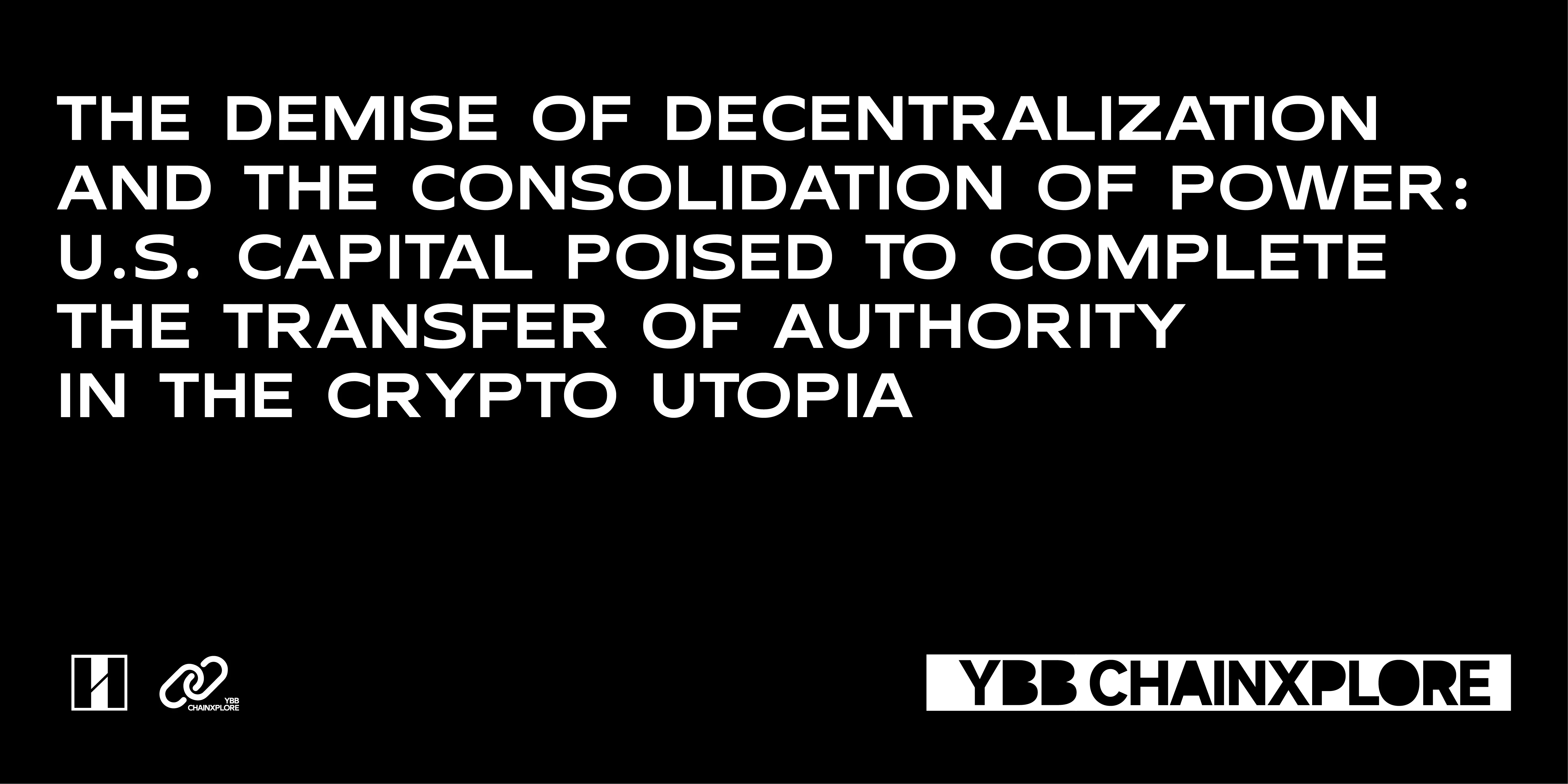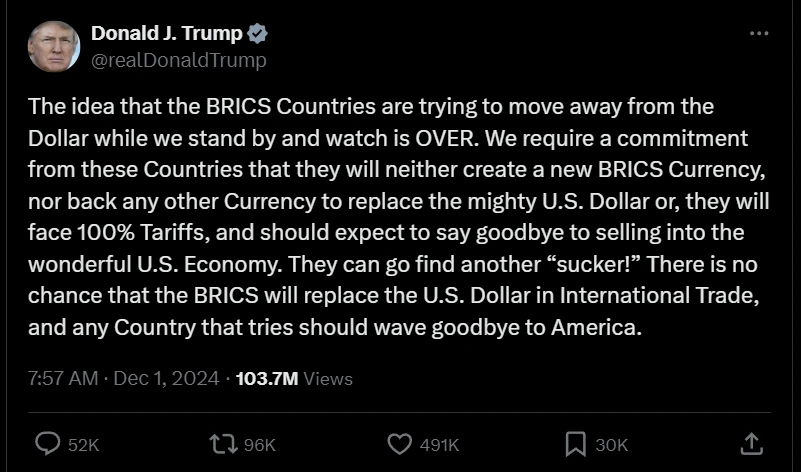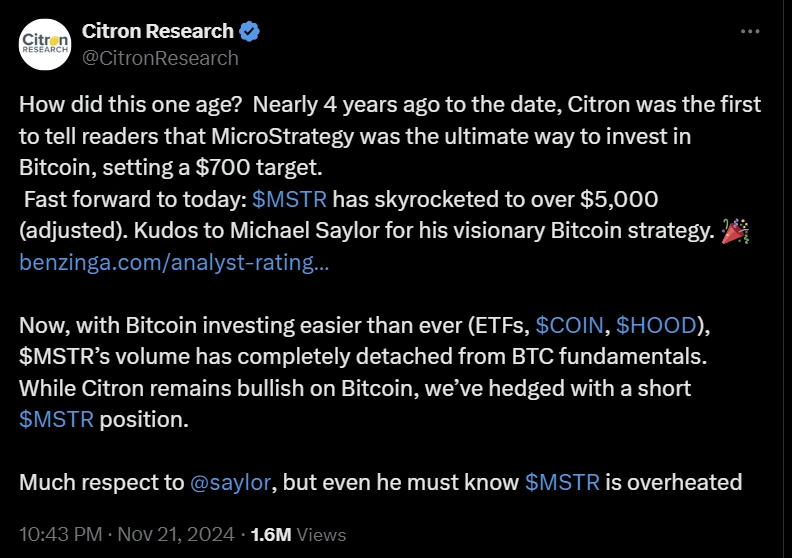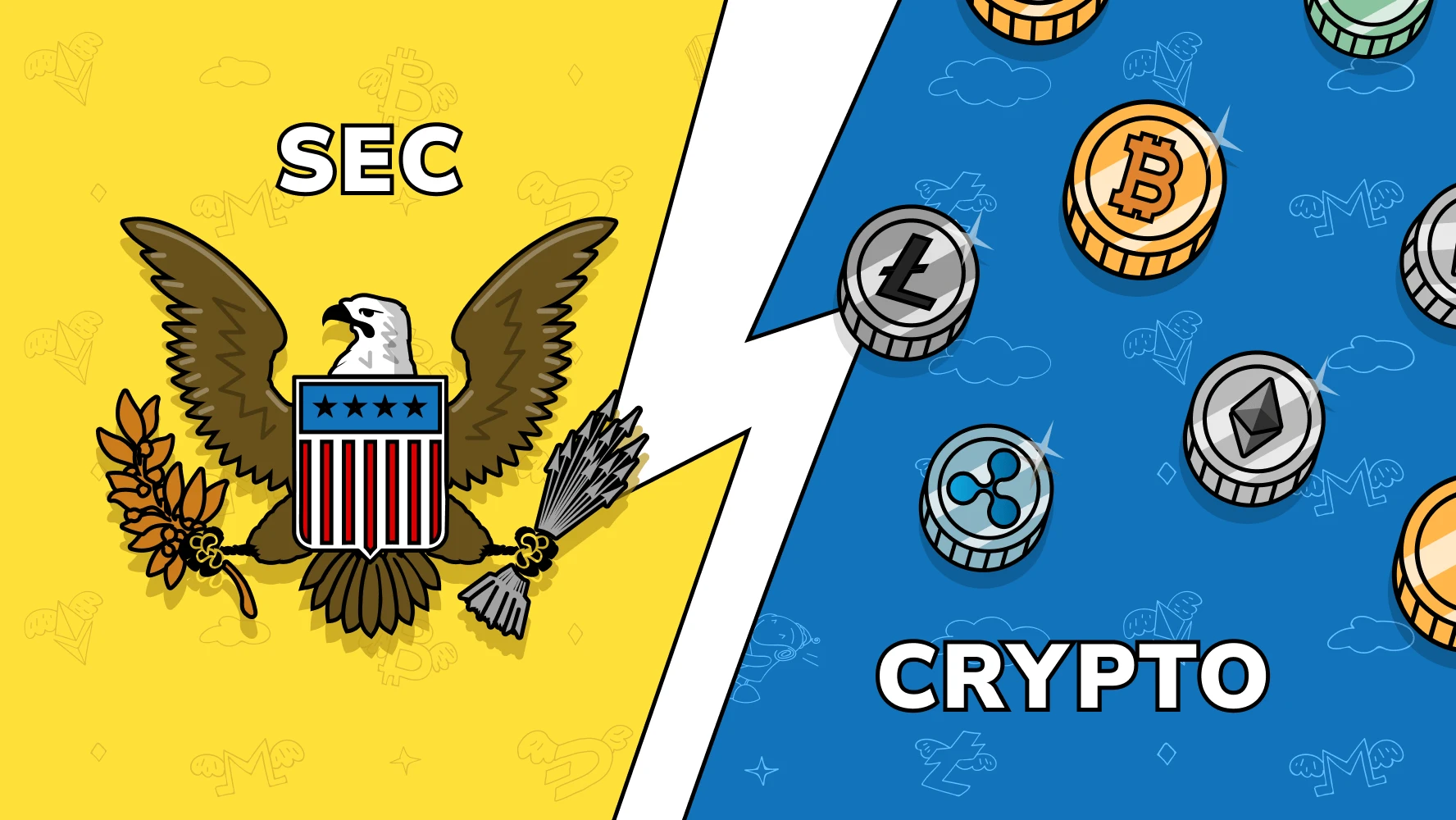The demise of decentralization and the concentration of power: US capital is about to complete the transfer of rights to
原文作者:YBB资本研究员Ac-Core

总结
-
In the long run, Bitcoin through ETF is not good. There is a huge gap between the trading volume of Hong Kong Bitcoin ETF and that of the United States Bitcoin ETF. There is no doubt that US capital is gradually engulfing the 加密货币 market. Bitcoin ETF divides the market into black and white parts. The white part only has the single financial attribute of speculative trading under the framework of centralized financial supervision, while the black part has more native blockchain activity and trading opportunities, but it needs to face regulatory pressure due to illegality;
-
MicroStrategy has achieved efficient arbitrage between stocks, bonds and Bitcoin through capital structure design, and closely linked its stocks with the fluctuations of Bitcoin prices, thus achieving low-risk returns in the long run. However, MicroStrategy is issuing unlimited bonds with unlimited leverage, which requires a long-term Bitcoin bull market to maintain its own value. Therefore, Citrons odds of shorting MicroStrategy are higher than those of directly shorting Bitcoin, but MicroStrategy is confident that the future price trend of Bitcoin will be a slow rise without large fluctuations;
-
Trumps crypto-friendly policy will not only not lose the dollars status as a global reserve currency, but will also strengthen the dollars pricing power in the crypto market. Trump is holding on to the dollars dominance with his left hand and refusing to compromise, while holding on to Bitcoin, the strongest weapon against the lack of trust in national fiat currencies with his right hand. This is a two-way consolidation and hedging of risks.
1. US capital gradually engulfs the crypto market
1.1 Hong Kong and US ETF Data
According to Glassnode data on December 3, 2024, the holdings of the US Bitcoin spot ETF are only 13,000 away from surpassing Satoshi Nakamoto, with the holdings of the two being 1,083,000 and 1,096,000 respectively. The total net asset value of the US Bitcoin spot ETF reached $103.91 B Bitcoin, accounting for 5.49% of the total market value of Bitcoin. At the same time, according to Aastocks on December 3, data from the Hong Kong Stock 交换 showed that the total trading volume of Hong Kongs three Bitcoin spot ETFs in November was approximately HK$1.2 billion.

Image source: Glassnode
US capital is deeply involved in and influencing the global crypto market, and even dominates the development of the crypto industry. ETFs have pushed Bitcoin from an alternative asset to a mainstream asset, but they have also weakened the decentralized nature of Bitcoin. ETFs have brought in a large amount of traditional capital, but they have also made the pricing power of Bitcoin firmly controlled by Wall Street.
1.2 The “black and white division” of Bitcoin ETF
Classifying Bitcoin as a commodity means that it must follow the same rules as other commodities such as stocks and bonds in terms of tax law. However, the impact of the launch of a Bitcoin ETF is not completely equivalent to the launch of other commodity ETFs, such as gold ETFs, silver ETFs, and crude oil ETFs. The Bitcoin ETFs currently approved or approved are different from the markets recognition of Bitcoin itself:
-
The path to commodity ETFs is like a person (trustee) holding physical assets or commodities in his left hand, who needs to place them in custody with a custodian in the middle (such as a copper warehouse and a gold bank vault), and an authorized institution is required to complete transfers and records, etc. On the right hand, after the shares are initiated (such as fund shares), there will be share holders who will buy, sell, subscribe, and use funds to purchase shares.
However, in the above process, the front end (design, development, sales and after-sales service, etc.) will involve physical delivery, spot delivery and cash delivery. However, the front end (subscription and redemption of shares) of the Bitcoin ETF approved by the US SEC is currently a cash delivery method, which is also what Cathie Wood has been arguing about, and she hopes that it can be completed by physical delivery, but this is impossible to achieve in practice.
Because cash custodians in the United States are institutions under the traditional centralized financial framework that conduct cash subscription and redemption transactions, this also means that the first half of the Bitcoin ETF is completely centralized.
-
At the end of Bitcoin ETF, it is difficult to confirm the centralized regulatory framework. The reason is that if you want to recognize Bitcoin, you need to become a commodity under the existing centralized financial framework, and you will never recognize the decentralized attributes of Bitcoin such as its ability to replace legal currency and its non-traceability. Therefore, Bitcoin can only be used for various financial product derivatives, such as futures, options, and ETFs, if it fully complies with regulatory conditions.
Therefore, the emergence of Bitcoin ETF means the complete failure of Bitcoin ETF in its fight against legal currency. The decentralization of Bitcoin ETF is meaningless. The front end needs to rely entirely on legal custody like Coinbase to ensure that the entire buying and selling transaction chain is legal, open and traceable.
The black and white of Bitcoin will be completely divided because of ETF:
The current white part: Under the centralized regulatory framework, through the extensive financial product derivatives, the market price volatility is reduced, and as the legal participants become more and more extensive, the speculative volatility of Bitcoin commodities will gradually decrease. After Bitcoin passed the ETF, the white part has lost its important demand side (the decentralized and anonymous attributes of Bitcoin) in the supply and demand relationship of the market, leaving only a single financial attribute that can be speculated. At the same time, under the legalized regulatory framework, it also means that more taxes need to be paid, so that the original function of Bitcoin to transfer assets and avoid taxes no longer exists. That is, the endorsement has been transferred from the decentralized chain to the centralized government.
The former black part: The main reason why the crypto market will surge and plummet is that it is opaque and anonymous, making it easy to be manipulated. At the same time, the black part of the market will be more open, more vibrant with the original value of blockchain, and more trading opportunities. However, due to the emergence of the white part, those black parts that are unwilling to turn white will always be excluded from the centralized regulatory framework and lose their pricing power, just like paying a fine to the SEC.
2. Trump’s Crypto All-Star Cabinet Selection
2.1 Cabinet members
In the 2024 US presidential election, Trumps victory may lead to a more open attitude towards cryptocurrencies compared to the restrictive policies of regulatory agencies such as the SEC, the Federal Reserve, and the FDIC during the Biden administration. According to Chaos Labs data, the nominations for Trumps new administration are as follows:

Image source: @chaos_labs
Howard Lutnick (Transition Team Leader and Nominee for Commerce Secretary):
Lutnick, as CEO of Cantor Fitzgerald, is an open supporter of cryptocurrencies. His firm has actively explored the blockchain and digital asset space, including a strategic investment in Tether.
Scott Bessent (Nominee for Secretary of Finance):
Bessent, a veteran hedge fund manager, supports cryptocurrency, believing it represents freedom and will exist for a long time. He is more friendly to cryptocurrency than former Treasury Secretary candidate Paulson.
Tulsi Gabbard (Nominee for Director of National Intelligence):
Gabbard supports Bitcoin with privacy and decentralization as its core concepts, and invested in Ethereum and Litecoin in 2017.
Robert F. Kennedy Jr. (Nominee for Secretary of Health and Human Services):
Kennedy has publicly supported Bitcoin as a tool to combat the debasement of fiat currencies and could become an ally of the crypto industry.
Pam Bondi (Attorney General nominee):
Bondi has not yet made a clear statement on cryptocurrencies, and its policy direction is unclear.
Michael Waltz (National Security Advisor Nominee):
Waltz is an active supporter of cryptocurrencies, emphasizing their role in promoting economic competitiveness and technological independence.
Brendan Carr (FCC Chairman Nominee):
Carr is known for his anti-censorship and support for technological innovation, and may provide technical infrastructure support for the crypto industry.
Hester Peirce Mark Uyeda (potential candidates for SEC Chairman):
Peirce is a staunch supporter of cryptocurrencies and advocates for regulatory clarity. Uyeda has been critical of the SEC’s tough stance on cryptocurrencies, calling for clear regulatory rules.
2.2 Crypto-friendly policies are a financial tool to hedge against the lack of trust in the global reserve of the US dollar
Will the White Houses promotion of Bitcoin in the future shake peoples trust in the US dollar as a global reserve currency, thereby weakening the dollars status? American scholar Vitaliy Katsenelson suggested that at a time when market sentiment towards the US dollar has been disturbed, the White Houses promotion of Bitcoin may shake peoples trust in the US dollar as a global reserve currency, thereby weakening the US dollars status. As for the current fiscal challenges, what can really make the United States continue to be great is not Bitcoin, but controlling debt and 定义cits.
Perhaps Trumps actions may become a hedge for the US governments future risk of losing its dominance over the US dollar. In the context of economic globalization, all countries hope to achieve the international circulation, reserve and settlement of their own legal currencies. However, in this issue, there is a trilemma between monetary sovereignty, free capital circulation and fixed exchange rates. The important value of Bitcoin is that it provides a new solution to national institutional contradictions and economic sanctions in the context of economic globalization.

Image source: @realDonaldTrump
On December 1, 2024, Trump stated on social platform X that the era of BRICS countries trying to break away from the US dollar is over. He asked these countries to promise not to create a new BRICS currency or support any other currency that might replace the US dollar, otherwise they would face a 100% tariff and lose access to the US market.
Today, Trump seems to be holding on to the dominant position of the US dollar with his left hand and refusing to compromise, while holding on to Bitcoin, the strongest weapon to combat the lack of trust in national legal currencies, with his right hand. This is consolidating the US dollars international settlement rights and pricing power in the crypto market in both directions.
3. The long-short battle between MicroStrategy and Citron Capital
During the U.S. stock trading session on November 21, Citron Research, a well-known short-selling institution, released a message on the social platform X, stating that it planned to short the Bitcoin-heavy stock MicroStrategy (MSTR). This news caused MicroStrategys stock price to fall sharply, and at one point it fell back by more than 21% from its intraday high.
The next day, MicroStrategy Executive Chairman Michael Saylor responded in an interview with CNBC that the company not only relies on Bitcoins volatile trading to make profits, but also leverages its investment in Bitcoin through the ATM mechanism. Therefore, as long as the price of Bitcoin continues to rise, the company can remain profitable.

Image source: @CitronResearch
In general, MicroStrategy (MSTR)s stock premium and its strategy of achieving profitability through the ATM (At The 市场) mechanism, leverage in Bitcoin investment, and the views of short-selling institutions on this can be summarized as follows:
-
Sources of stock premium:
Most of MSTRs premium comes from the ATM mechanism. Citron Research believes that MSTRs stock has become an alternative investment to Bitcoin, and its stock price has an unreasonable premium compared to Bitcoin, so it decided to short MSTR. However, Michael Saylor refuted this view, believing that the short sellers ignored MSTRs important profit model.
-
MicroStrategy Leverage:
Leverage and Bitcoin Investment: Saylor pointed out that MSTR invests in Bitcoin through debt issuance and financing, relying on the volatility of Bitcoin to make profits. The company flexibly raises funds through the ATM mechanism to avoid the discounted issuance in traditional financing, while taking advantage of high trading volume to achieve large-scale stock sales and obtain arbitrage opportunities for stock premiums.
-
Advantages of ATM mechanism:
The ATM model allows MSTR to raise funds flexibly and transfer debt volatility, risk, and performance to common stock. Through this operation, the company is able to obtain returns far higher than the cost of borrowing and the increase in Bitcoin. For example, Saylor pointed out that by financing an investment in Bitcoin at an interest rate of 6%, if Bitcoin rises by 30%, the company actually obtains a return of about 80%.
-
Specific profit cases:
By issuing $3 billion in convertible bonds, the company expects to earn $125 per share in 10 years. If the price of Bitcoin continues to rise, Saylor predicts that the companys long-term gains will be very substantial. For example, two weeks ago MSTR raised $4.6 billion through an ATM mechanism, trading at a 70% premium, earning $3 billion in Bitcoin in five days, equivalent to $12.5 per share, and long-term gains are expected to reach $33.6 billion.
-
Risk of Bitcoin falling:
Saylor believes that buying MSTR shares means that investors have accepted the risk of falling Bitcoin prices. If you want to get high returns, you must take corresponding risks. He expects Bitcoin to rise 29% per year in the future, while MSTRs stock price will rise 60% per year.
-
MSTRs market performance:
MSTRs stock price has risen 516% this year, far exceeding Bitcoins 132% increase over the same period, and even exceeding AI leader Nvidias 195% increase. Saylor believes that MSTR has become one of the fastest-growing and most profitable companies in the United States.
Regarding Citron’s short selling, MSTR CEO said that Citron does not understand where MSTR’s premium over Bitcoin comes from and explained:
“If we invest in Bitcoin with funding at 6% interest, and the price of Bitcoin rises 30%, we actually get an 80% spread on Bitcoin (a function of the equity premium, conversion premium, and Bitcoin premium).”
“The company issued $3 billion in convertible bonds. Based on an 80% spread in Bitcoin prices, this $3 billion investment could generate $125 per share in 10 years.”
This means that as long as the price of Bitcoin keeps rising, the company will continue to make money:
“Two weeks ago, we did $4.6 billion in ATMs and traded at a 70% spread, which means we made $3 billion in Bitcoin in five days. That’s about $12.50 per share. If you calculate it over 10 years, the profit will be $33.6 billion, or about $150 per share.”
In summary, MicroStrategys operating model is to achieve efficient arbitrage among stocks, bonds, and currencies through the design of capital structure, and highly bind its stocks to the rise and fall of Bitcoin prices to ensure the companys low-risk profit in the long term. However, the essence of MicroStrategy is to issue unlimited bonds on assets and raise its own value with unlimited leverage, which requires a long-term Bitcoin bull market to maintain its own value. However, there is no doubt that Citrons shorting of MicroStrategy is much more likely to have a higher odds than shorting Bitcoin, so MicroStrategy is also certain that the future price trend of Bitcoin will be a slow rise without large fluctuations.
四、总结

Image source: Tradesanta
The United States is constantly strengthening its control rights in the crypto industry, and market opportunities are constantly shifting to centralization. The decentralized crypto utopia is gradually compromising with centralization and handing over its rights. Medicines are poisonous in parts, and the funds that continue to flow into ETFs are just pain-relieving capsules that cannot cure the disease.
In the long run, Bitcoin through ETF is not good. There is a huge gap between the trading volume of Hong Kong Bitcoin ETF and the trading volume of US Bitcoin ETF. According to the circulation volume of capital, US capital is gradually engulfing the crypto market. Even though China is an absolute leader in the mining field, it is still at a disadvantage in terms of capital market and policy orientation. Perhaps the long-term impact of Bitcoin ETF in the future will accelerate the normalization of crypto asset trading. This is the beginning and the end.
参考:
Fu Peng: Let’s talk about the SEC and Bitcoin ETF-black and white centralization
This article is sourced from the internet: The demise of decentralization and the concentration of power: US capital is about to complete the transfer of rights to the crypto utopia
Related: Filecoin Fast Finality (F3) Mainnet is about to launch
Original author: Filecoin Network Filecoin Fast Finality (FIP 0086: Fast Finality in Filecoin (F3) ) is one of the most transformative upgrades to the Filecoin consensus layer since the mainnet launch. After nearly two years of intensive research and development, F3 is now ready for mainnet deployment and is expected to bring breakthrough progress to the entire ecosystem! By reducing the finalization time from 900 blocks to only about 2, F3 brings a full range of substantial benefits: Faster transaction confirmations: Token holders and Dapp users will see transactions completed in minutes instead of hours. Enhanced cross-chain experience: Oracles and bridges will complete transactions and state changes faster. Imagine a future Dapp that can seamlessly issue storage transactions from other chains to Filecoin and receive confirmation within minutes of the…







